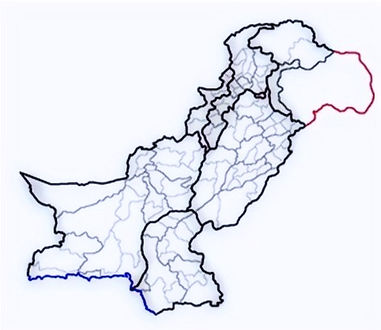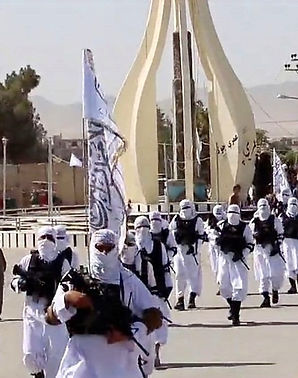SITUATION ANALYSIS
The 2021 U.S. Withdrawal from Afghanistan not only increases regional instability, but escalates the national security threat.
Time Since Kabul Fell to the Taliban
Key Notes on Handling Afghanistan
Understand Paksitan's role in terror sponsorships. Pakistan must be stopped from continued support of terror while recieving aid/support from the United States.
Afghanistan (like other Middle Eastern countries) is not a simple matter. Long term, there are two options to conduct warfare. Either continued a prolonged fight in Afghanistan or withdraw to return to a worse situation.
The People's Republic of China can use Afghanistan to advance foreign policy. Beijing already has a stakehold in one of Afghanistan's largest benefactors (Paksitan).
20 Years after September 11: Evolving Terror Threats from Afghanistan
War in Afghanistan: A Brief Analysis
After 9/11, the United States (U.S.) launched the Global War on Terror. On September 18, 2001, Congress passed the AUMF (Authorization for Use of Military Force) against Afghanistan. Several days earlier, prayers were held across the country, and President George W. Bush visited Ground Zero. On September 20, 2001, the President Bush declared the U.S. ultimatum for the Taliban and outline of the Bush Doctrine. If the Taliban did not extract Osama bin Laden to U.S. custody, they would be met with military force.
In October 2001, after the Taliban refused to comply, the U.S. invaded Afghanistan. Named Operation Enduring Freedom, the primary goals were to capture or kill Osama bin Laden, and defat the Taliban and al-Qaeda. U.S. forces cooperated with the Northen Alliance, while more troops deployed. On October 26, 2001, Congress passed the USA PATRIOT Act to prevent future terrorist activity. By November 2001, most of Taliban controlled Afghanistan was overthrown. The following month, Osama bin Laden and the Taliban leader Mullah Omar escaped from Tora Bora.
In January 2002, the U.S. began to extend the national security apparatus to include Iraq. Through 2002 and into 2003, the U.S. shifted priority to the invasion of Iraq. In Afghanistan, the Taliban (through Pakistan) poured into the country. They fought against U.S. and Coalition forces as insurgents. Until 2010, most of the war theatre was on Iraq. U.S. troop deployments to Afghanistan peaked 100,000 from 2010-2011.
In May 2011, U.S. Navy SEALs killed Osama bin Laden. The raid was conducted in bin Laden's compound in Abbottabad, Pakistan. By December 2014, the combat phase of Operation Enduring Freedom was closed.
From 2015-2021, the War in Afghanistan was known as Operation Freedom's Sentinel. During that period, U.S. troops began a slow withdrawal from Afghanistan. The U.S. did however extend targeting to include ISIS militants spreading in Afghanistan. Afghan forces (who have been trained by the U.S. for years) were to slowly gain control of Afghanistan to resist the Taliban. In February 2020, the U.S. and Taliban signed a peace deal. Under the agreement, the Taliban would cut all ties with terrorist groups, and U.S. troops would fully withdraw by May 1, 2021. In Spring 2021, the deal fell flat as the withdrawal date was changed several times. The final date was set for August 31, 2021. In May 2021, the Taliban launched an offensive to retake control of Afghanistan. On August 26, 2021, 13 U.S. troops were killed during the Kabul Airport Attack. Four days later on August 30, 2021, all U.S. forces were withdrawn from Afghanistan.
Throughout the entire phase of the War in Afghanistan, the U.S. eliminated numerous Taliban and al-Qaeda leaders. One method was through drone strikes. In 2004, the U.S. began to heavily use drones against terrorist targets. Drone strikes took place in Afghanistan, Pakistan, Yemen, and Somalia. Most U.S. strikes against Taliban and al-Qaeda targets were in Pakistan. Though civilian casualties were high, most of the Taliban and al-Qaeda leadership was eliminated. In recent years, to reduce civilian casualties, the U.S. began deploying the use of 'ninja missiles'. In August 2022, the U.S. used a ninja missile in a drone strike against al-Qaeda leader Ayman al-Zawahiri.
Terror Threats Following the Withdrawal
After U.S. Forces formally withdrew from Afghanistan in August 2021, it elevates the concern about American national security. Prior to 9/11, al-Qaeda plotted and trained under Taliban-controlled Afghanistan. Now that the Taliban regained control of the country, there is speculation they could strengthen their relationship with al-Qaeda. There are documented terror threats that emerged in the wake of the withdrawal. Going forward, the evolving situation in Afghanistan could affect future U.S. policy and counterterrorism efforts.






